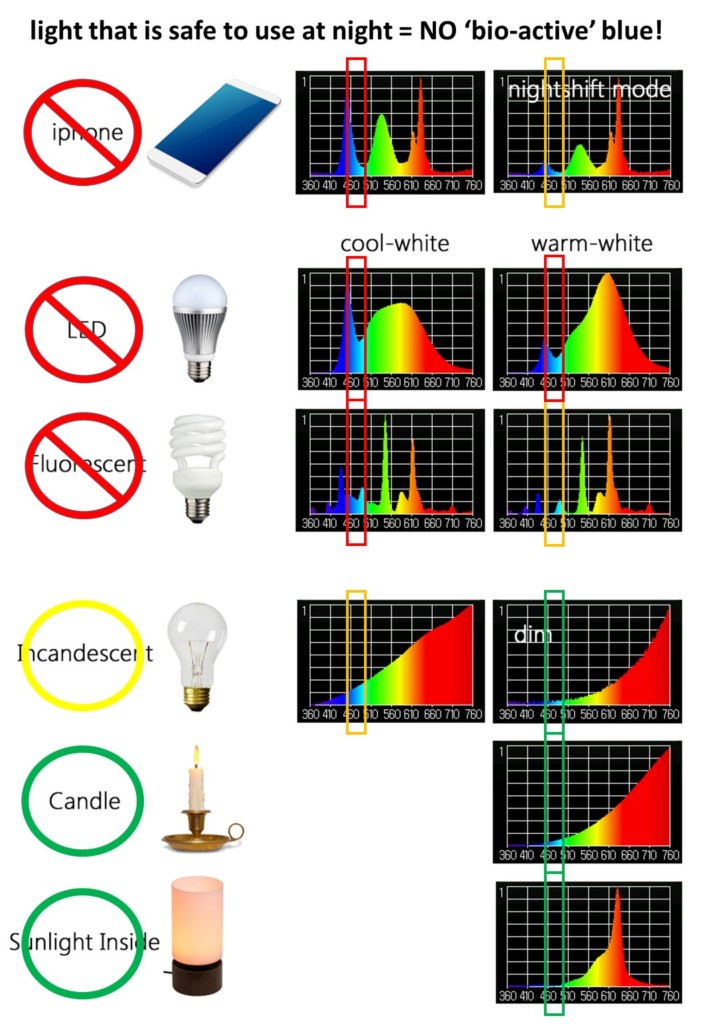Imagine yourself nestled in bed, the room bathed in a soft, calming glow. The gentle light emanating from your bedside lamp helps you unwind after a long day, easing you into a state of tranquil slumber. But what if I told you that the color of that light can have a profound impact on your sleep quality?

Image: www.sunlightinside.com
Choosing the right LED color for your bedroom can be the key to unlocking a world of better sleep, but the options can seem overwhelming. This guide will delve into the science behind the impact of LED light on sleep, helping you navigate the spectrum and find the perfect hue to support a peaceful night’s rest.
The Impact of Light on Sleep
Our internal clock, also known as the circadian rhythm, regulates our sleep-wake cycle, influencing essential bodily functions like hormone production and body temperature. Light is a powerful synchronizer of this rhythm, acting like a conductor for our sleep orchestra.
Exposure to blue light, typically found in electronic devices like smartphones and tablets, can suppress the production of melatonin, a sleep-regulating hormone. This disruption can lead to delayed sleep onset, difficulty falling asleep, and even poorer sleep quality.
The Role of Color Temperature
To understand the impact of different LED colors, we need to grasp the concept of color temperature, measured in Kelvin (K). The higher the Kelvin value, the cooler the color, exhibiting a bluish tint. Conversely, lower Kelvin values indicate warmer colors with a reddish-yellow hue.
Here’s a breakdown of different color temperatures and their potential effect on sleep:
-
Cool White (6000K-6500K): This color temperature, often used in office lighting, emits a blue-white light that can suppress melatonin production, making it less ideal for nighttime use.
-
Neutral White (4000K-4500K): A more balanced color temperature that is less harsh than cool white, but still may not be the most optimal choice for sleep.
-
Warm White (2700K-3000K): This color temperature produces a warm, yellowish glow similar to traditional incandescent bulbs, promoting relaxation and melatonin production. It is often associated with a more comfortable and sleep-conducive environment.
-
Soft White (2200K-2700K): The softest and most amber-like color temperature, creating a cozy and soothing ambiance. This is a highly recommended option for bedtime lighting.
Red Light: A Sleep-Friendly Option
Emerging research suggests that red light, with its longer wavelength, has minimal impact on melatonin production. This makes it an ideal color for bedtime reading or relaxation, without disrupting your sleep cycle.

Image: gradycindy.blogspot.com
Beyond Color: Consider Brightness, too
While color temperature is crucial for creating the right sleep environment, we mustn’t neglect the importance of brightness. Dimming the lights as you approach bedtime is essential to signal to your body that it’s time to wind down.
The ideal brightness for a sleep-friendly space varies. Some individuals find a very dim, almost nonexistent light conducive to sleep, while others prefer a slightly brighter ambiance. Experiment and find what works best for you.
Expert Tips for Optimizing Your Sleep Environment
Here are some practical tips from sleep experts and lighting professionals to guide your journey toward a more restful sleep:
-
Minimize blue light exposure at least an hour before bed: Put down your phone, tablet, and computer screen, and switch to a warm-toned bedside lamp.
-
Use a dimmer switch: This allows for flexible light adjustments, enabling you to gradually dim the lights as you wind down for the night.
-
Consider using blackout curtains: Blocking out external light sources can promote a deeper and more restful sleep.
-
Install smart lighting systems: These systems allow for programmed light changes, gradually transitioning from bright white to a soft warm glow as the evening progresses.
What Is The Best Led Color To Sleep With
Embracing the Power of Light for Better Sleep
By understanding the relationship between light and sleep, you can consciously curate your lighting environment to support a peaceful night’s rest. Experiment with different color temperatures, brightness levels, and light sources to discover the perfect recipe for a rejuvenating sleep experience. Remember, each individual is unique, and the optimal lighting solution will vary based on personal preferences and sensitivities. So, embark on this journey of exploration and unlock the power of light to enhance your sleep and well-being.





